Trip to Romania and Bulgaria
Romania
This winter, we had the chance to visit Romania, a country that left me unexpectedly enchanted. Our journey began in Bucharest, where we immersed ourselves in the city’s vibrant culture through walking tours. One of the highlights was visiting the famous Cărturești bookstore—a stunning space filled with books and unique gifts. On the top floor, we discovered a cozy café, which unfortunately was closed by the time we got there—we got distracted by the book collection!
Exploring Brașov
From Bucharest, we took a train to Brașov, a town that felt like it was pulled straight from a postcard. As the train wound its way through snowy landscapes, we could feel the excitement building. Brașov greeted me with its charming cobbled streets, colorful buildings, and the towering Black Church. Visiting Bran Castle was the highlight of this leg of my trip. Snow began to fall as we approached, transforming the castle into a magical, wintry masterpiece. It felt like something out of a dream.
While in Brașov, we tried cozonac, a traditional Romanian cake. Its rich, slightly sweet flavor and soft texture were perfect for the cold winter day. The experience was made even better by the cozy atmosphere at the bistro aptly called Couchette, traveller’s bistro, which was popular among visitors due to its proximity to the train station, and which had absolutely friendly staff, who helped me figure out the logistics.
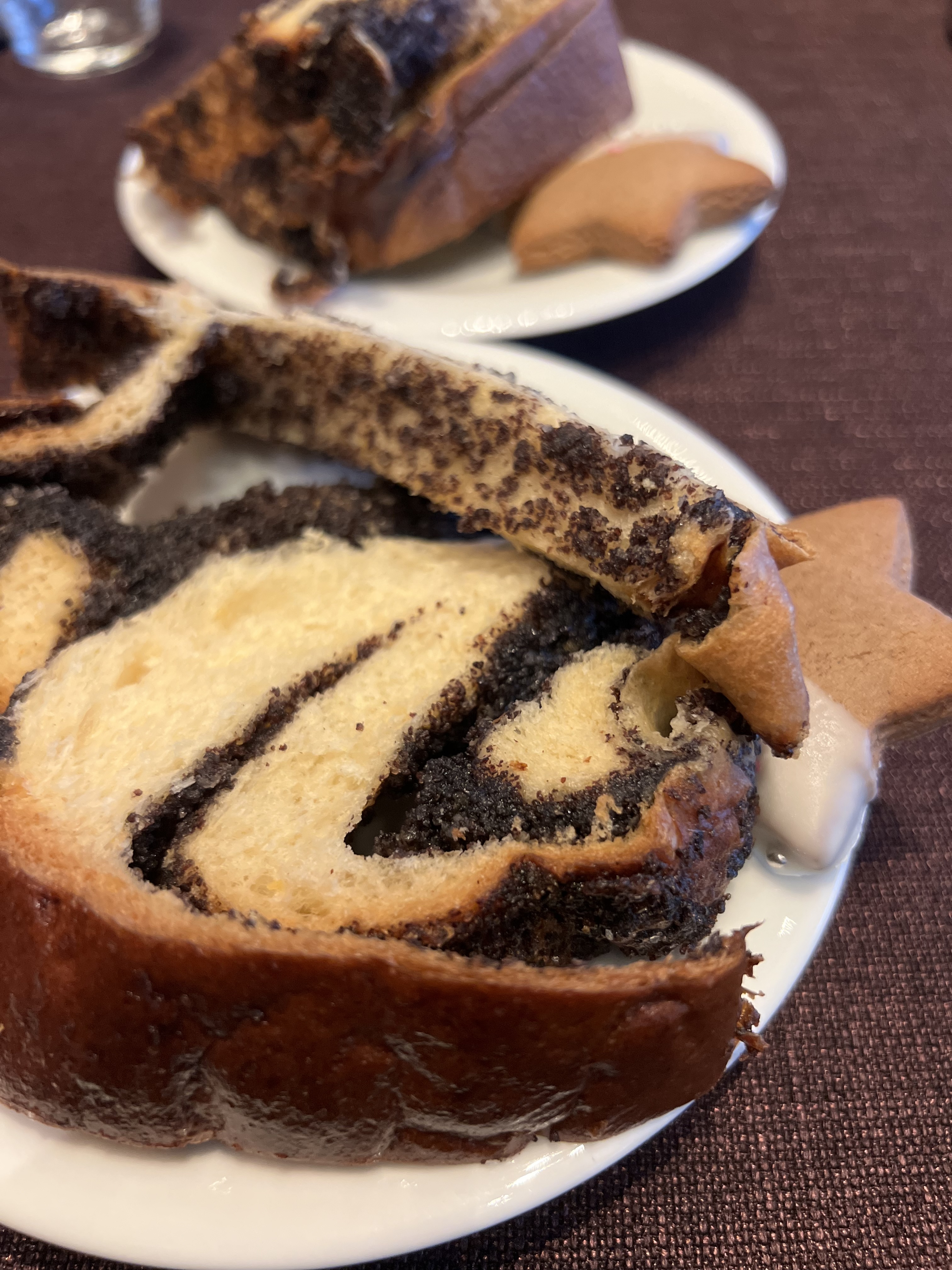
A Spontaneous Detour to Turda
After Brașov, we boarded a night train to Cluj but decided, on a whim, to get off early at Câmpia Turzii. This unplanned detour turned into one of my favorite parts of the trip. From there, we caught a bus to Turda, where we had breakfast before visiting Salina Turda. This underground salt mine was breathtaking, with its enormous caverns and an ethereal underground lake. Walking through the surreal tunnels, we couldn’t help but marvel at how unique and unexpected this experience was.
Wandering Cluj and Sibiu
Later, we made our way to Cluj, where the town’s Austro-Hungarian architecture created a different but equally beautiful vibe. **We** wandered through its streets, admiring shops filled with handmade pottery featuring intricate, colorful designs. Each piece felt like a tiny window into Romania’s rich artistic tradition.
My journey continued to Sibiu, where Christmas lights and decorations adorned the streets. The ASTRA Museum, an open-air showcase of traditional Romanian life, was a highlight of my visit. The museum featured an impressive collection of model houses from various regions across Romania, each uniquely crafted to reflect the lifestyle, culture, and occupation of its original inhabitants. It was fascinating to see how the design of a house varied depending on whether it belonged to farmers, craftsmen, or fishermen, and how the architectural styles were influenced by the towns or regions they came from. Strolling among the old wooden houses and traditional windmills, we felt as though we had stepped back in time, walking through centuries of Romanian history.
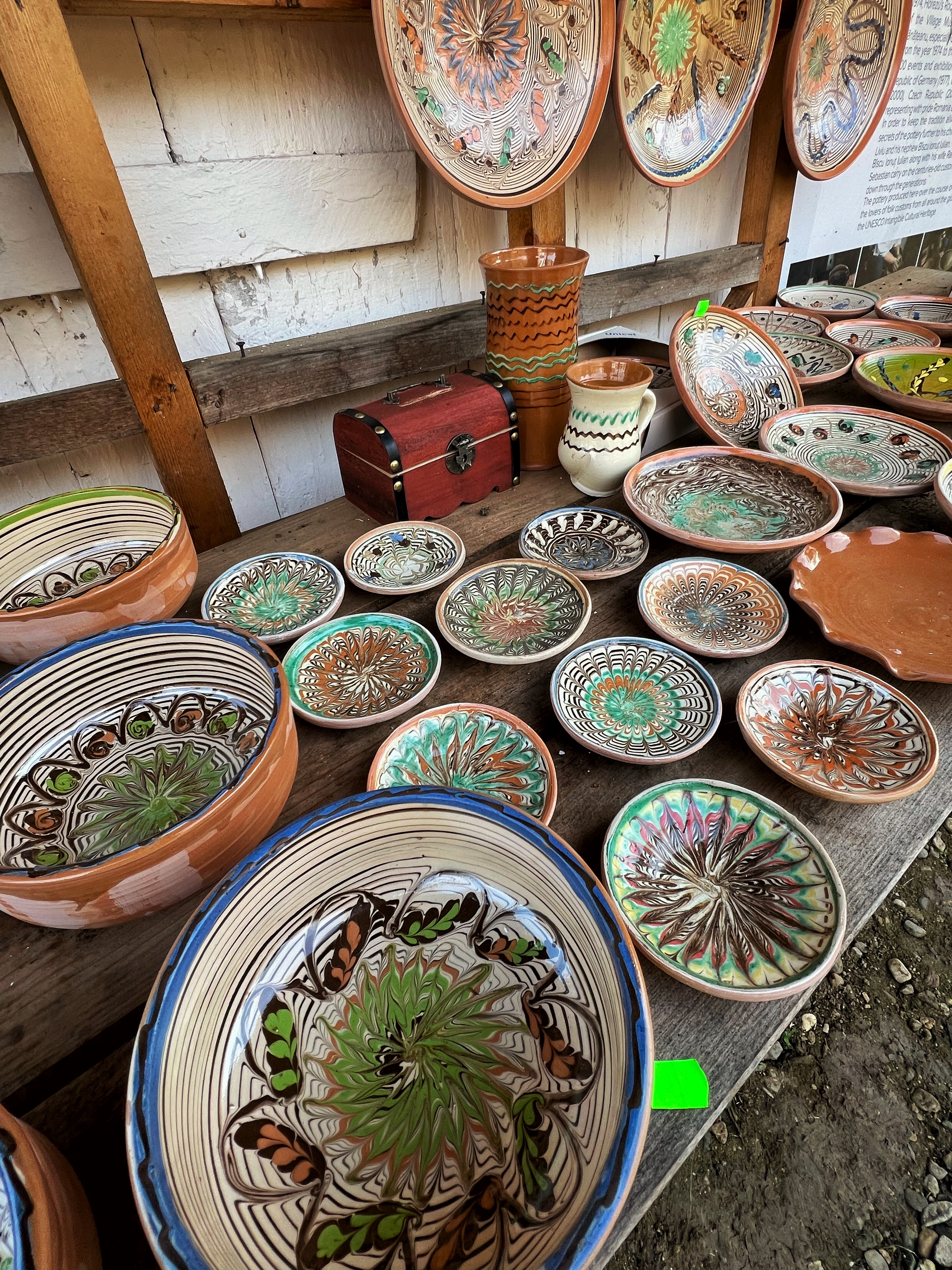
Final Reflections
Returning to Bucharest, I reflected on how much I had experienced in such a short time. Romania had surprised me with its diverse architecture, breathtaking landscapes, and festive holiday spirit. I loved the vegetarian dishes I tried, the warm and cozy feel of the Christmas markets, and the countless cups of hot chocolate I indulged in along the way. Watching the traditional bear dance performances in Brașov and Sibiu was particularly memorable. The bear dance, a traditional Romanian ritual performed around the winter holidays, featured dancers wearing elaborate bear costumes made of real fur. Accompanied by rhythmic drumbeats and chants, the performers moved with a raw, primal energy that was both captivating and symbolic. It was fascinating to learn that this ritual, rooted in ancient traditions, was believed to chase away evil spirits and bring good fortune for the year ahead.
Above all, what struck me most was the beauty of the countryside. Despite knowing Romania was sparsely populated, I wasn’t prepared for how stunning and peaceful it would feel. From snowy castles to underground marvels, Romania gave me memories I’ll treasure forever.
Exploring Bulgaria: Sofia, Plovdiv, and Beyond
After Romania, we boarded a night bus to Sofia. We spent a bit of time exploring the city before renting a car and driving to Plovdiv, the European Culture Capital of 2024. Plovdiv completely captivated me—there was something about this town that felt magical and almost otherworldly. The beautiful mix of architectural styles, from Roman ruins to Ottoman and Bulgarian Revival buildings, created a unique charm that seemed to reflect its rich history.
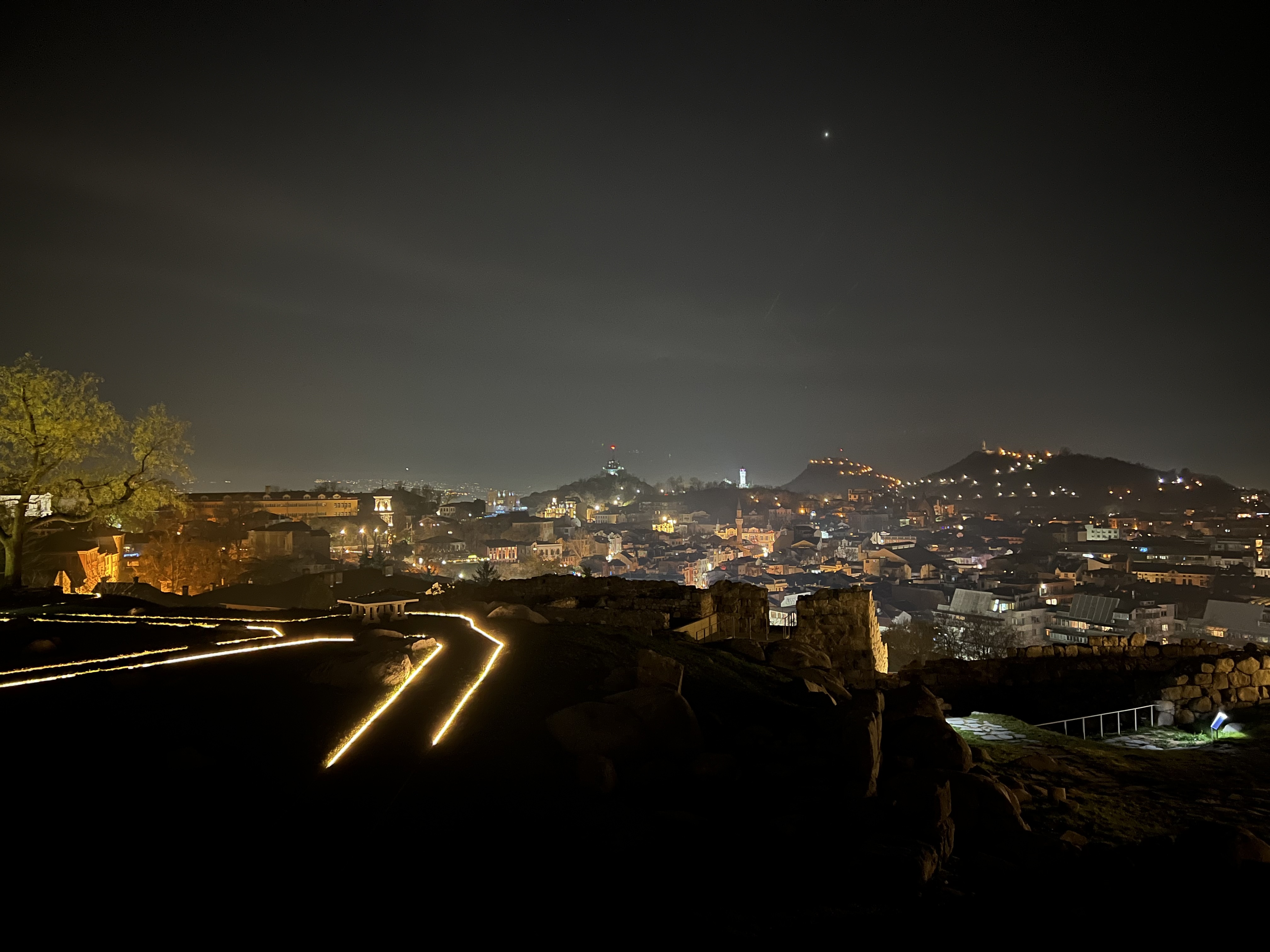
One of the highlights was visiting Nebet Tepe at night. Standing atop the hill, we gazed out over the city lights, which sparkled like stars against the dark sky. The view was absolutely enchanting, and for a moment, it felt like time had stopped. There was a warmth and serenity in the air, perhaps because of the lingering holiday spirit or the cozy atmosphere of the town. We almost didn’t want to leave Plovdiv—it felt like the place was holding on to me, wrapping me in its charm and beauty.
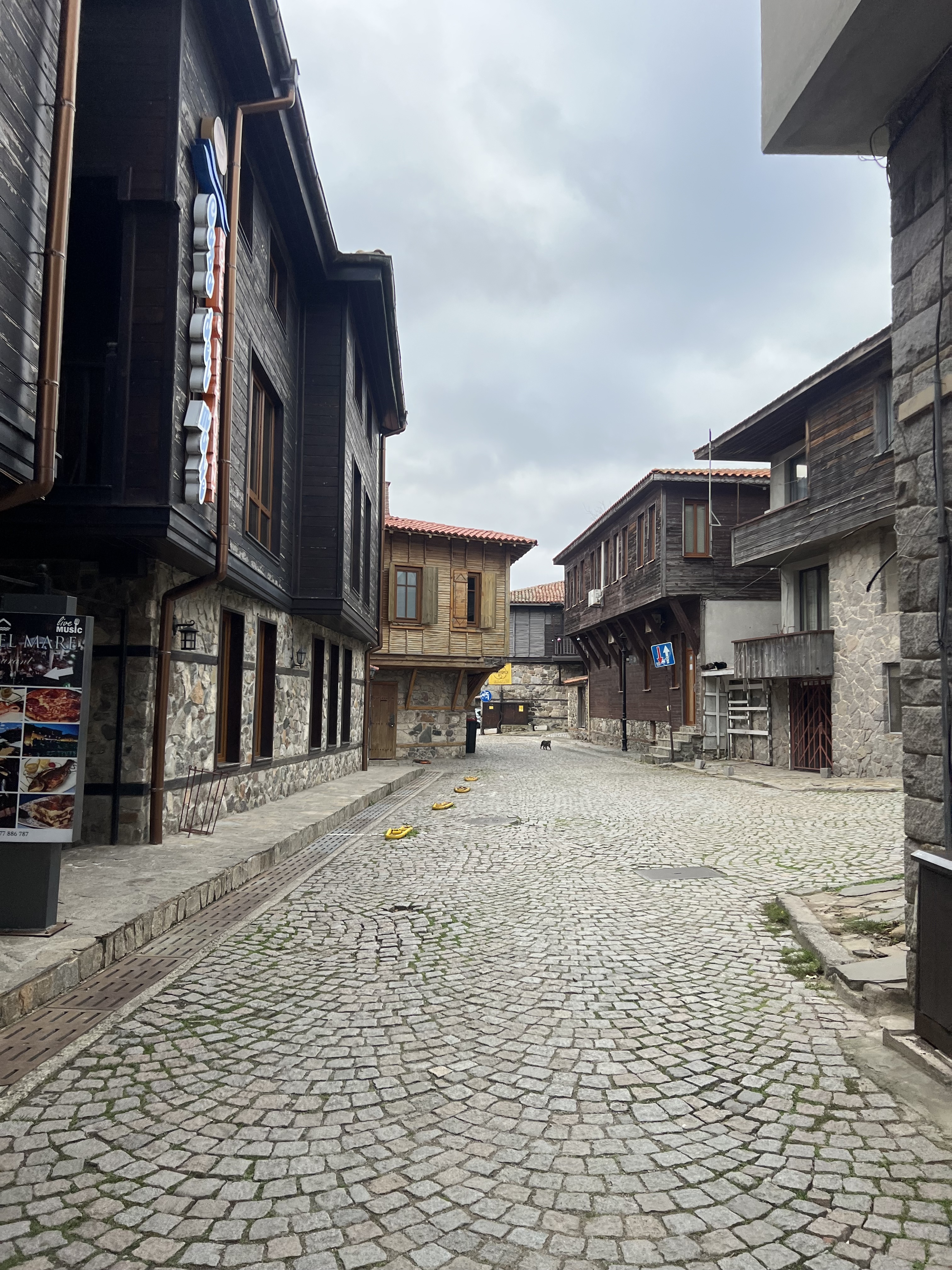
Plovdiv’s streets, with their blend of cobblestone paths and modern touches, were a joy to wander. The artistic energy of the town was palpable, with galleries, cafés, and small artisan shops scattered throughout. It felt like every corner had its own story to tell. Leaving Plovdiv was difficult, as it left a lasting impression on me—one **I** know I’ll carry with me for a long time.
From Plovdiv, we headed to Sozopol, where we rested for the night. We hadn’t accounted for the fact that Sozopol is very quiet during the winter months, but this turned out to be a blessing in disguise. The tranquil streets and unique architecture gave me a different perspective on the town, showcasing a side of it that felt untouched by the usual crowds of summer tourists. After soaking in the peaceful ambiance, we explored central Burgas, enjoying its relaxed vibe and charm.
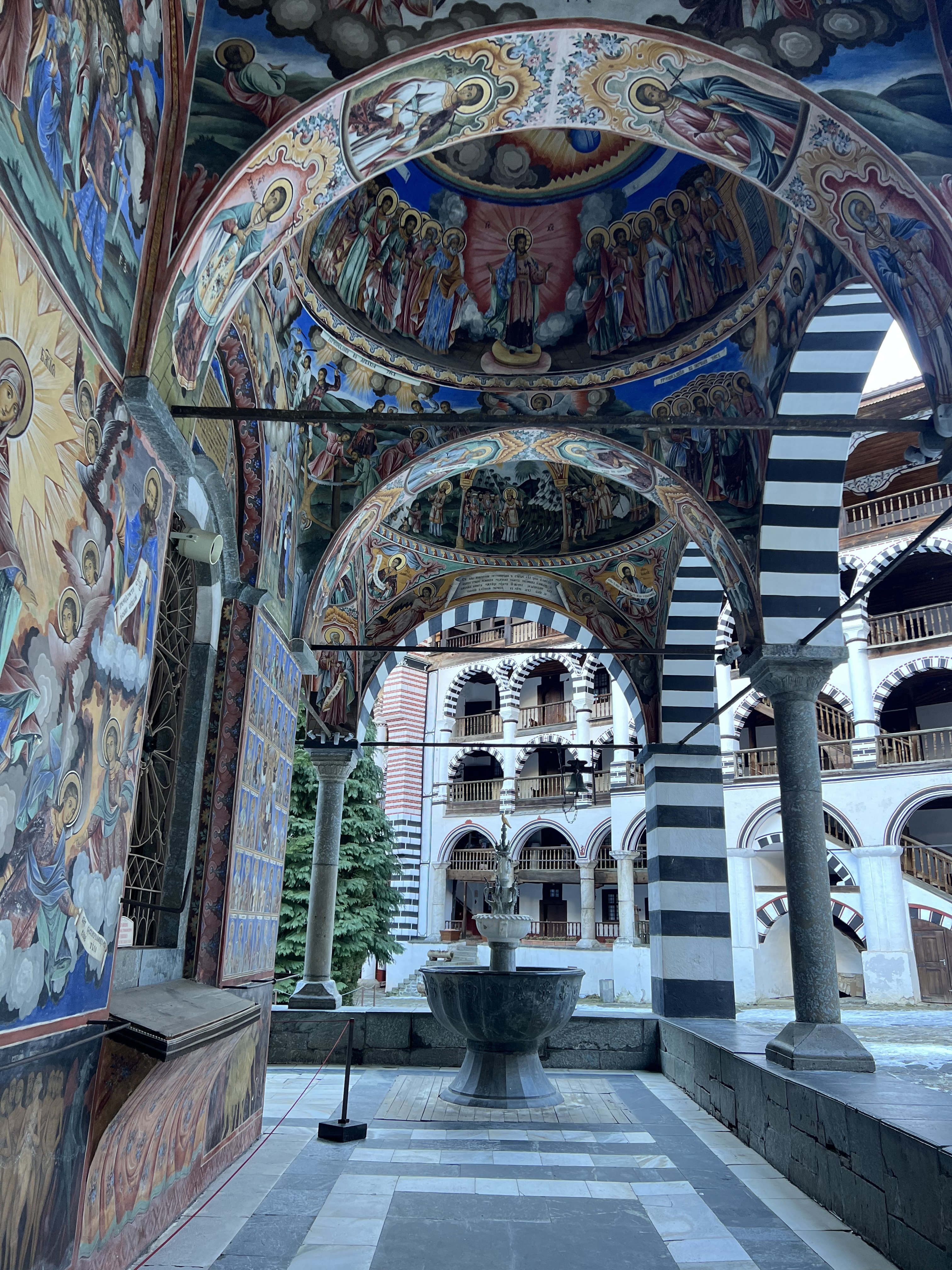
New Year’s in Sofia
We returned to Sofia to spend New Year’s Eve, but we hadn’t anticipated how many restaurants would be closed for the holiday. The few that were open had been booked well in advance, leaving us with limited options. In the end, we grabbed gyros from a stall and strolled around the city. The crisp, -6°C air made it difficult to stay out for long, so we called it an early night.
The next day, we explored more of Sofia’s landmarks, including its stunning cathedrals. The mix of historical and modern elements in the city made for a fascinating experience. As our time in Bulgaria came to an end, we felt grateful for the blend of planned adventures and unexpected moments that made the trip so memorable.
As my journey through Romania and Bulgaria came to an end, I couldn’t help but feel grateful for the incredible memories—snowy castles, mesmerizing traditions, breathtaking landscapes, and charming towns. The trip was made even more delightful by the countless stray cats we encountered, whose charm often derailed our plans as we stopped to pet every friendly feline that crossed our path. Yet, I know there’s still so much left to explore in these beautiful countries, and I hope to return someday to uncover even more of their hidden treasures.